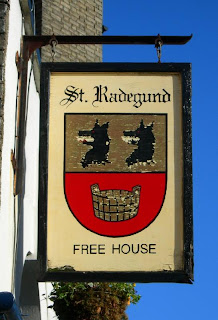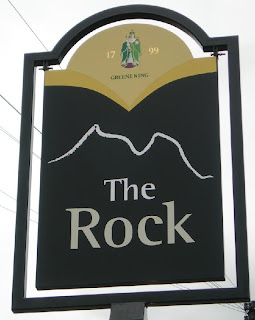Military medal buffs will recognise this at the 1914 Star (or ‘Mons Star’), here gilded and with added colour in true Nicholsons style. This is the campaign medal awarded to those members of the British Expeditionary Force serving in France and Belgium between 5 August and 22 November 1914.
Survivors of this phase of the war took to referring to themselves as ‘The Old Contemptibles’ after a supposed order of Wilhelm II referring to General French’s ‘contemptible little army’.
The local branch of the Old Contemptibles Association used to meet in this pub, then known as the Albion Hotel, which was renamed in their honour in 1953.











































